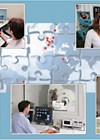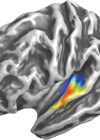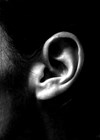Audiology features archive for May 2017
European funding for the tinnitus research network TINNET
Over 70 million people in Europe experience tinnitus, and for seven million it creates a debilitating condition. Severe tinnitus is often associated with depression, anxiety and insomnia, resulting in an enormous socio-economic impact [1]. It has been estimated that 13...
What does functional neuroimaging tell us about tinnitus?
One of the most common causes of tinnitus is noise exposure, be that either cumulative day-to-day exposure over a lifetime or experience of acute noise trauma such as a loud concert or shooting incident. Observational data indicate that up to...
Measuring the pitch and loudness of tinnitus
Matching the characteristics of tinnitus Many researchers and clinicians have explored the subjective nature of tinnitus by asking people with tinnitus to adjust a sound so that it matches their tinnitus in some way. This can be useful both for...
Questionnaires to measure tinnitus severity
The handicap associated with tinnitus can arise from any combination of stress, anxiety, depression, emotional distress, insomnia, difficulties concentrating, or impairments in quality of life or everyday functioning. Measuring such handicap and determining clinical need is therefore far from trivial....
Intratympanic treatments for subjective idiopathic tinnitus
Direct application of medication into the ear is long established, going back as far as written records. In the modern era, greater understanding of aural anatomy revealed that drugs instilled in the middle ear could potentially diffuse into the cochlea...
Drawing pictures and telling stories: treating tinnitus in childhood
There is increasing awareness that tinnitus is not restricted to adults. Indeed, the available evidence suggests that some experience of tinnitus in children is fairly common [1]. For many, tinnitus has little effect and requires limited or no intervention. For...
Selecting and optimising hearing aids for tinnitus benefit: a rough guide
Hearing aids have a relatively long history as tinnitus treatment tools. Saltzman and Ersner reported success in suppressing tinnitus with simple hearing aids in a number of cases as early as 1947 [1]. In an early comprehensive approach to tinnitus...
Mindfulness based approaches to tinnitus management: meditations on a new approach
Psychological approaches to tinnitus There is now widespread agreement that an individual’s interpretation of tinnitus can determine how distressing they find it. If tinnitus is regarded as non-threatening then habituation normally follows. If, however, tinnitus is interpreted as threatening, habituation...
Are we making progress on tinnitus?
One of the aspects of tinnitus that drew me into it becoming a major theme of my clinical and research work was how little work had been done when I began to see patients in the mid 1980s. This struck...
What do animal models tell us about tinnitus and hyperacusis?
Do animals have tinnitus? The obvious question to ask is: do animals have tinnitus? It is known that tinnitus is a conscious percept and as such affected by attention and not audible during sleep. For it to be demonstrated that...
Hearing care systems – European examples
In this article, Vice President of the European Federation of Hard of Hearing, Lidia Best, explores the drivers for improvement and change in European hearing care systems. In 2010, the European Committee for Standardization (CEN) issued the EN-15927 European Standard...
Universal newborn hearing screening: a global health perspective
Intuitively, as health professionals, we know that universal newborn hearing screening (UNHS) makes sense. Bolajoko Olusanya outlines how UNHS fits in with global health priorities, as well as illustrating how such programmes can help to deliver additional benefits to communities....

















